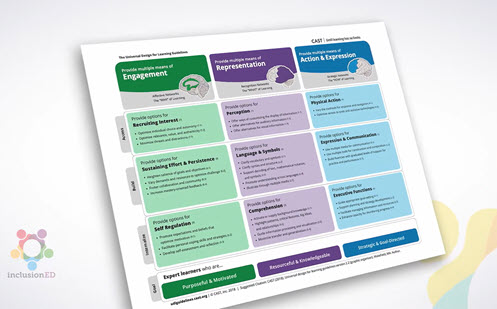Universal Design for Learning (UDL)
Overview
Based on the principles of Universal Design, Universal Design for Learning (UDL) encourages teachers to design their lessons with all their learners in mind from the beginning, rather than designing a lesson and then planning adjustments for students with specific needs. It is a framework for differentiating and providing equitable access to learning.
There are three UDL guidelines that frame the implementation of UDL in the classroom.
- Engagement: providing multiple modes of engagement, that show why you are learning this topic.
- Representation: providing students with multiple modes of access to the knowledge, showing what you are learning.
- Action and expression: allowing students to present their learning in multiple ways.
The teacher:
- makes the lesson goals clear
- plans lessons with multiple entry points and prompts to help students progress
- identifies possible barriers to learning and plans how they can be avoided or overcome
- provides information for students in a variety of formats, allowing them to access information in a way that suits them
- allows students to illustrate their learning in different modes – written, oral, video etc.
- has flexible workspaces in the classroom
- gives students regular feedback.
The students:
- know why they are learning the topic and can relate to it
- can access the information they need in a variety of ways
- can present their knowledge in a way that is meaningful to them.
Example of the strategy in action

See how UDL guides the design of instructional goals, assessments, methods, and materials that can be customised and adjusted to meet individual needs of learners. A panel of experts discusses the UDL practices from a year 1 mathematics lesson.

Watch this video to learn more about UDL in lesson planning.
